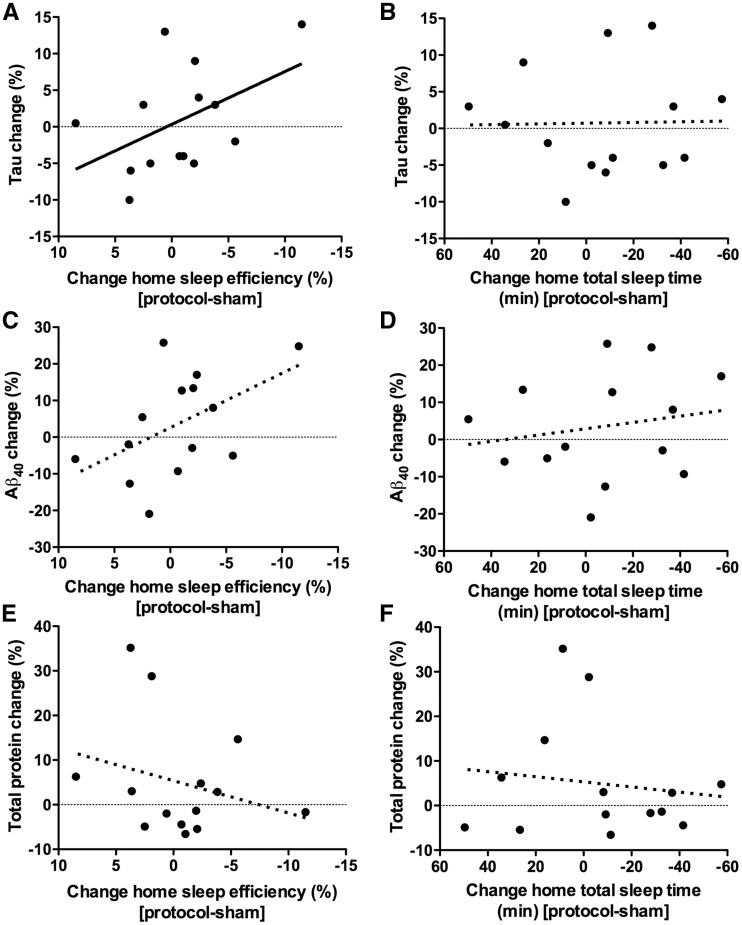Figure 3.
Worse home sleep quality over six nights is associated with increased CSF tau. Home sleep was quantified by actigraphically-measured sleep variables for the six nights prior to lumbar punctures. Valid actigraphy data were available for n = 14 participants. For consistency with other figures, sleep variables are shown as the six nights that included SWA disruption protocol night minus the six nights that included the sham condition night; however, the differences in total sleep time or sleep efficiency reflect variations in home sleep and are not related to the protocol or sham condition. For consistency with other figures, x-axes are more negative to the right, i.e. values to the right indicate less or worse sleep. (A) Worse sleep quality, as measured as the sleep efficiency, was associated with greater tau levels (r = 0.543, P = 0.045). (C) There was a strong but non-significant trend for an association between worse home sleep quality and amyloid-β40 levels (r = 0.481, P = 0.081), but (E) there was no correlation between sleep quality and total protein (r = −0.218, P = 0.455). Change in home sleep quantity, as measured by actigraphically-determined total sleep time, had no correlation with (B) tau (r = 0.103, P = 0.725), (D) amyloid-β40 (r = 0.218, P = 0.455), or (F) total protein (r = −0.103, P = 0.725).

